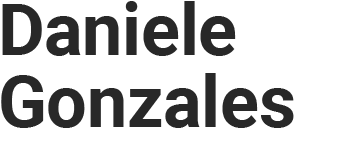
Today, it’s not difficult to live stream an event. Outlets litter the outdoors, and public WiFi is found nearly everywhere. But in 2000, it was rare to broadcast on the Internet, and nearly impossible to do so from the remote site of a 2,500 year old Italian temple. Still, I was asked to do just that. For the opening of the theatrical work Una Festa per Aristofane, I had to rely on ingenuity, barely-used technology, and a bit of luck to make the curtains rise for viewers around the world.
As it was only the year 2000, this was a feat even CNN was still experimenting with—and at least they had electrical outlets in their Atlanta hub. The closest plug at this site was in a village 20 miles away! My only possible connection was through a satellite. So, we rented one hour of satellite time, tested the connection, assisted the technicians in installing the dish, helped them establish their position through GPS, and pointed the antenna to the satellite in the sky; we worked relentlessly until show time, all the while wondering, “Will it work?”
I still remember the evening so vividly: driving my car away from the site with my laptop in tow and going to the closest place with an Internet connection. I held my cell phone against my ear to call friends all over the world, and asked them to check the quality of the images they saw on their screen. But it was only when I looked down at my own screen that I realized what I had done: turned risk into success to make magic.
This is a tale from the past, but it recently brought new questions to light: are such small miracles repeatable? When working on big platform projects, is there still an opportunity to be innovative, to do groundbreaking work? It’s difficult, but approaching a challenge with Human Centered Design (HCD) in mind brings seemingly impossible tasks down to size. Here’s where to start:
- Embed HCD in everything that you do.
- Build brand value holistically.
- Design for three years out.
- When necessary, create new structures and teams.
- Nurture your existing digital culture.
If you are somewhat familiar with HCD, the first three are arguably the most intuitive. The second two will ensure success; they address the challenges of launching and harmonizing digital behaviors and cultural norms that enable sustainable changes—something that becomes all the more difficult in large companies.
In their article “Reimagine Your Enterprise,” Christopher A.H. Vollmer, Matt Egol, and Naseem Sayani of consulting group Strategy& further reveal the intricacies of implementing HCD: “It’s not just matter of rearranging the lines and boxes on your organization chart. It involves fostering a startup way of working, creating new structures and teams, and enhancing the incentives, rules, and decisions rights of these rules and these teams accordingly.”
By now, HCD has become my standard of thinking for developing strategies around big platform projects. Still, it’s rarely implemented by the companies who hire us to do the work. The simplest, most effective way to help our clients transition is to lead by example: literally show how this methodology directly, positively impacts them and their business.
Particularly in the case of large platform projects, reimagining a website experience can be a long and daunting process. Not only is the right kind of feedback necessary, but the right timing as well—which is when an HCD methodology is useful. During a recent three-day rapid experience design (RED) session for one of the most-known companies in North America, hundreds of user stories were translated into a single working design prototype. This was a feat in and of itself, but more than that, it demonstrated how a collaborative exercise involving key players on both sides can foster success, even early on. After the session, the client praised our team for making quick work of a long process: “What we accomplished in the week would have normally taken multiple weeks if we had done it through email and web chats. And what can we say about the creative? The VML team nailed it.”
In just a few days, an HCD-centered session provided the start of a sustainable solution to ongoing challenges. And while there’s certainly more work to be done, we do know it is best done with HCD in mind. After all, if it brought magic to life once, and this time, we have more plugs.
A big thank you to Taylor Tokarz who helped in streamlining this writing.

